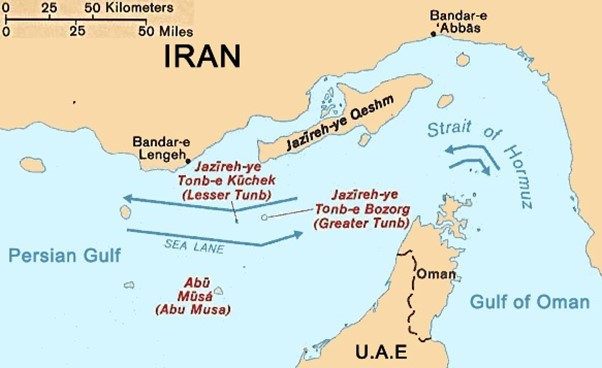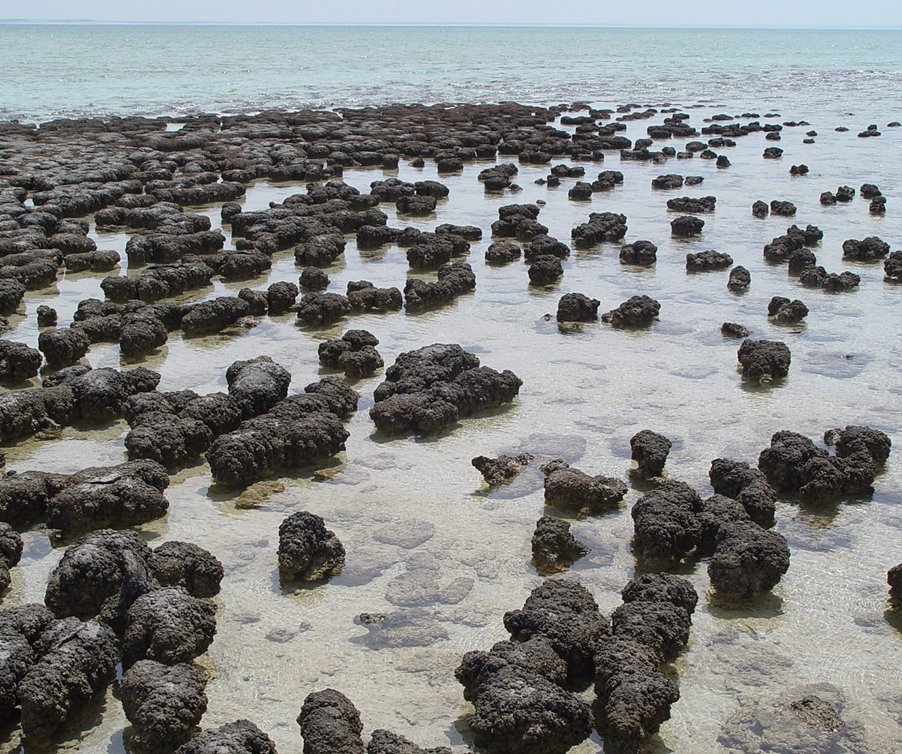IASbaba's Daily Current Affairs Analysis
Archives
(PRELIMS & MAINS Focus)
Syllabus
- Prelims & Mains – AGRICULTURE
Context: Over 1 lakh farmers voluntarily gave up their PM-Kisan benefits last year.
Background:-
- Bihar, Uttar Pradesh and Rajasthan lead the chart of 1.16 lakh farmers who have voluntarily given up the benefits of the annual Rs 6,000 Pradhan Mantri Kisan Samman Nidhi (PM-Kisan) scheme across the country from June 2023 to May 2024, according to data available with the Ministry of Agriculture & Farmers Welfare.
- Possible reasons for some farmers giving up the PM-Kisan benefits include: absentee landlords who may have decided against availing of the subsidy; land going to tax-paying descendants who are not eligible; change in status of land-owners.
About PM KISAN
- PM Kisan, or the PM-Kisan Samman Nidhi, is a Central Sector scheme with 100% funding from the Government of India. It has been operational since December 1, 2018.
Here are some key details about the scheme:
- The scheme provides an income support of ₹6,000/- per year in three equal installments to all land holding farmer families.
- The definition of a family for the scheme is husband, wife, and minor children.
- The State Government and UT administration identify the farmer families which are eligible for support as per scheme guidelines.
- The fund is directly transferred to the bank accounts of the beneficiaries.
- There are certain exclusion categories for the scheme. The following categories of beneficiaries of higher economic status are not eligible for benefit under the scheme:
- All Institutional Land holders.
- Farmer families which belong to one or more of the following categories:
- Former and present holders of constitutional posts
- Former and present Ministers/ State Ministers and former/present Members of LokSabha/ RajyaSabha/ State Legislative Assemblies/ State Legislative Councils, former and present Mayors of Municipal Corporations, former and present Chairpersons of District Panchayats.
- All serving or retired officers and employees of Central/ State Government Ministries /Offices/Departments and its field units Central or State PSEs and Attached offices /Autonomous Institutions under Government as well as regular employees of the Local Bodies.
- Prime Minister released the 16th Installment of the PM KISAN scheme on February 28, 2024. eKYC is mandatory for PM KISAN Registered Farmers.
Source: Indian Express
Syllabus
- Prelims – CURRENT EVENT
Context: European Parliament elections will be held from June 6-9.
Background:
- Around 373 million citizens across the 27 member states of the European Union are eligible to vote on June 6-9 in elections to the European Parliament, which is the only directly elected body of the EU.
Key takeaways
- The European Parliament (EP)is the only directly elected body of the EU, representing the citizens of its member states.
- The Parliament has3 main roles:
- Legislative
- Passing EU laws, together with theCouncil of the EU, based on European Commission proposals
- Deciding on international agreements
- Deciding on enlargement of the bloc
- Reviewing the Commission’swork programme and asking it to propose legislation
- Supervisory
- Democratic scrutiny of all EU institutions
- Electing the Commission President and approving theCommission as a body. Possibility of voting a motion of censure, obliging the Commission to resign
- Granting discharge, i.e. approving the way EU budgets have been spent
- Examining citizens’petitions and setting up inquiries
- Discussing monetary policy with theEuropean Central Bank
- Questioning Commission and Council
- Election observations
- Budgetary
- Establishing the EU budget, together with the Council
- Approving the EU’s long-term budget, the “Multiannual Financial Framework”
- Unlike national parliaments, the EP does not have the right to propose laws but can only negotiate those proposed by the executive European Commission.
- The EP comprises 720 Members (MEPs) elected every five years. The MEPs then elect their president for a term of two and a half years.
- It represents the second-largest democratic electorate in the world (after the Parliament of India) with an electorate of around 373 million eligible voters.
- Legislative
Who can vote in the elections?
- In 21 member states, people aged 18 and above can vote. In Belgium, Germany, Austria and Malta, the minimum voting age is 16. In Greece, people who turn 17 during the election year can vote, and in Hungary, married individuals can vote regardless of age.
- Citizens living in another EU country can choose to vote for candidates either from their country of origin or from their country of residence.
Who can run?
- All candidates must be EU citizens. Voters may choose from individual candidates or political parties’ delegates, depending on the country. Once elected, politicians from each nation will flow into the European groups that form the Parliament, based on political orientations.
- Elected individuals cannot hold functions in national governments or other political bodies such as the EU Commission.
Source: Indian Express
Syllabus
- Prelims & Mains – Governance
Context: Indian Institute of Public Administration assessed the impact of mission karmayogi by seeking inputs on recently trained staff from their supervisors and reported increased proficiency in data analytics and e-governance tools
Background:
- Improved governance and efficient and competent civil services are required for achieving India’s ambitions.
About Mission Karmayogi
- Mission Karmayogi, also known as the National Programme for Civil Services Capacity Building (NPCSCB), is an ambitious program launched by the Government of India.
- The mission was launched by the Union Cabinet on 2nd September 2020.
- It aims to transform the government’s human resource management, making the bureaucracy more efficient, effective, and accountable.
- The goal is to develop the skills and competencies of civil servants to deliver better results for citizens.
- The mission intends to lay down the foundations for the Indian civil servants’ capacity building and aims to enhance governance.

The guiding principles of Mission Karmayogi include:
- Shift from rule to role-based training and capacity building: Capacity building of government officials under Mission Karmayogi focuses on enhancing the attitudes, skills, and knowledge of these individuals through role-based training.
- Moving to a competency-driven approach for capacity development: A competency-driven capacity building approach focuses on developing competencies critical for public officials to effectively undertake their various roles.
- Democratising and enabling continuous, lifelong learning opportunities: Mission Karmayogi aims to make available to all government officials, across hierarchies and geographies, the opportunity to continuously build and strengthen the competencies required for their roles.
- The NPSCSB aims to embark on a learning transformation program that will address the capacity building issues of the Civil Services through a comprehensive online platform – iGOT Karmayogi.
- iGOT Karmayogi aims to provideonline, face-to-face and blended learning and manage lifelong learning records of the officials.
- Implementing and managing a platform of the complexity and size of iGOT requires a specialized institutional mechanism, with core competency in technology and innovation. Considering the specialist skills and management autonomy needed, the government has instituted a Special Purpose Vehicle (SPV) termed Karmayogi Bharat, to operate the iGOT Karmayogi platform and any other digital assets pertaining to the Program.
Institutional framework for Mission Karmayogi
- The Institutional Framework includes four institutions and functional bodies, with representation from the Centre, State and civil society, and oversight from the highest level of political office.
- These are the Prime Minister’s Human Resource Council, the Cabinet Secretariat Coordination Unit, the Capacity Building Commission and the SPV Karmayogi Bharat.
- As of now, there are 3506824 Total Karmayogis Onboarded and 1039 Total Courses available. The courses range from AI Using Google Bard and ChatGPT for Beginners by Invest India, Microsoft Excel for Beginners by Microsoft, to Women Self Defense Techniques Course by Central Reserve Police Force (CRPF), and many more.
Source: CBC
Syllabus
- Prelims – GEOGRAPHY
Context: China held its stance on three disputed islands in the Gulf despite Tehran’s anger at Beijing for describing the Iran-controlled islands as a matter to be resolved with the United Arab Emirates. The islands, claimed by the UAE and Iran, have been held by Tehran since 1971 after the withdrawal of British forces from the Gulf.
Background:
- In a statement last week, China expressed support for the efforts of the UAE to reach a “peaceful solution” to the issue of the islands – the Greater Tunb, the Lesser Tunb and Abu Musa. Following this, the Iranian foreign ministry summoned the Chinese ambassador to Iran to protest China’s repeated support” for the UAE’s baseless claims.
About Greater Tunb and Lesser Tunb :
- Greater Tunb and Lesser Tunb are two small islands in the eastern Persian Gulf, close to the Strait of Hormuz. They lie around 12 kilometres from each other and 20 kilometres south of the Iranian island of Qeshm.
- The islands are administered by Iran as part of its Hormozgan Province.
- Greater Tunb is known for its red soil. There are conflicting descriptions about its population: While some sources state there are between a few dozen and a few hundred inhabitants others describe the island as having no native civilian population.

- Lesser Tunb is uninhabited with the exception of a small airfield, harbour, and entrenched Iranian military unit.
Abu Musa
- Abu Musa is an island in the eastern Persian Gulf near the entrance to the Strait of Hormuz.
- Due to the depth of sea, oil tankers and big ships have to pass between Abu Musa and Greater and Lesser Tunbs; this makes these islands some of the most strategic points in the Persian Gulf.
- The island is administered by Iran as part of its province of Hormozgan.
Source: Reuters
Syllabus
- Prelims – SCIENCE AND TECHNOLOGY
Context: Scientists have unearthed living stromatolites — ancient geological structures made from algae — on Sheybarah Island, nestled on the northeastern shelf of the Red Sea in Saudi Arabia. These ancient life forms, dating back 3.48 billion years, were previously thought to thrive only in select modern environments like Shark Bay, Australia, and the Exuma Islands in the Bahamas.
Background:
- The reason this is such a crucial discovery is because Stromatolites are the earliest geological indicators of life on Earth.

About Stromatolites
- Stromatolites are layered sedimentary formations created mainly by photosynthetic microorganisms such as cyanobacteria, sulfate-reducing bacteria, and Pseudomonadota (formerly proteobacteria). These microorganisms produce adhesive compounds that cement sand and other rocky materials to form mineral “microbial mats”. These mats build up layer by layer, growing gradually over time.
- They exhibit a variety of forms and structures, including conical, stratiform, domal, columnar, and branching types.
- Stromatolites are considered the oldest living lifeforms on our planet.They are living fossils and provide important records of some of the most ancient life.
- These biotic structures were instrumental in the Great Oxygenation Event over two billion years ago, introducing oxygen into the atmosphere and transforming the planet’s habitability.
- Being photosynthetic, cyanobacteria produce oxygen as a by-product. Photosynthesis is the only major source of free oxygen gas in the atmosphere.
- As stromatolites became more common 2.5 billion years ago, they gradually changed the Earth’s atmosphere from a carbon dioxide-rich mixture to the present-day oxygen-rich atmosphere.
- This major change paved the way for the next evolutionary step, the appearance of life based on the eukaryotic cell (cell with a nucleus).
- The oxygenation event initially wiped out many of their competitors, allowing stromatolites to dominate the biosphere during the Archean eon, when life had just begun to bud.
- However, as life forms adapted to the oxygen-rich atmosphere, stromatolites began to decline, only reappearing in the geological record after mass extinctions or in extreme environments.
- The rediscovery of stromatolites on Sheybarah Island also offers potential insights into the search for extraterrestrial life, particularly on Mars.
- By studying stromatolites, which thrived before Earth had an oxygenated atmosphere, scientists can develop models to recognise potential signs of life on other planets.
Source: Business Insider
Syllabus
- Mains – GS 3
Context: India, the world’s second-largest wheat producer, plans to begin wheat imports after a six-year gap to replenish depleted reserves and control rising prices, driven by three consecutive years of disappointing crops.
Background:
- New Delhi is expected to abandon a 40% tax on wheat imports this year paving the way for private traders and flour millers to buy from producers such as top exporter Russia, albeit in modest volumes.
Reasons for India to Resume Wheat Imports:
- India’s wheat production has declined in the last 3 years due to unfavourable weather conditions, leading to a sharp drop in wheat output. The government estimates this year’s wheat crop to be 6.25% lower than the previous year’s (2023) record production of 112 million metric tons.
- As of April 2024, wheat stocks in government warehouses have dropped to 7.5 million tons, the lowest in 16 years, due to the government selling over 10 million tons from its reserves to control domestic prices.
- The government’s target for wheat procurement in the year 2024 was 30-32 million metric tons, but it has managed to buy only 26.2 million tons so far.
- Domestic wheat prices have stayed above the government’s minimum support price (MSP) of 2,275 rupees per 100 kg and have been on the rise recently. So, the government decided to remove the 40% import duty on wheat to allow private traders and flour millers to import wheat, primarily from Russia.
Implications of Resuming Wheat Imports:
- Abolishing import duty will likely lead to increased wheat supplies in the domestic market. This can potentially mitigate price hikes.
- Lower import costs can aid the government in replenishing depleted wheat reserves. This bolsters food security by creating a buffer against unforeseen disruptions in domestic production.
- While India’s estimated import volume (3-5 million metric tons) is modest, it could contribute to a rise in global wheat prices. This is due to the current scenario of high prices driven by production concerns in major exporting nations like Russia.
- India’s import requirement is unlikely to significantly influence the global market. Larger players will continue to exert a more substantial influence on global wheat price trends.
Source: Economic Times
Practice MCQs
Q1.) Consider the following statements about PM KISAN scheme
- It is a Central Sector scheme with 100% funding from the Government of India.
- The scheme provides an income support of ₹6,000/- per year in three equal installments to all land holding farmer families.
- The State Government and UT administration identify the farmer families which are eligible for support as per scheme guidelines.
How many of the statements given above are correct?
- Only one
- Only two
- All three
- None
Q2.) Consider the following statements about European Parliament (EP)
- The European Parliament (EP)is the only directly elected body of the European Union.
- Unlike national parliaments, the EP does not have the right to propose laws but can only negotiate those proposed by the executive European Commission.
- The EP comprises 720 Members (MEPs) elected every five years.
How many of the statements given above are correct?
- Only one
- Only two
- All three
- None
Q3.) Consider the following statements about Stromatolites:
- Stromatolites are layered sedimentary formations created mainly by photosynthetic microorganisms such as cyanobacteria.
- Stromatolites are considered the oldest living lifeforms on our planet.
Which of the statements given above is/are correct?
- 1 only
- 2 only
- Both 1 and 2
- Neither 1 nor 2
Comment the answers to the above questions in the comment section below!!
ANSWERS FOR ’ 5th June 2024 – Daily Practice MCQs’ will be updated along with tomorrow’s Daily Current Affairs.st
ANSWERS FOR 4th June – Daily Practice MCQs
Q.1) – c
Q.2) – c
Q.3) – d














